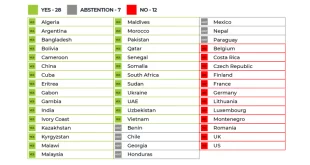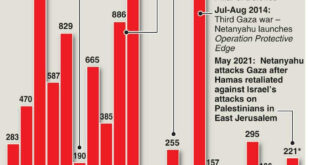 At least 28 Pakistani soldiers were killed today when NATO helicopters and combat jets fired on two border posts in the country's northwest, prompting army chief Gen Ashfaq Parvez Kayani to direct his troops to prepare for ''an effective response'' even as authorities cut off all supplies for US forces in Afghanistan.
At least 28 Pakistani soldiers were killed today when NATO helicopters and combat jets fired on two border posts in the country's northwest, prompting army chief Gen Ashfaq Parvez Kayani to direct his troops to prepare for ''an effective response'' even as authorities cut off all supplies for US forces in Afghanistan.
The attack, the worst single incident of its kind in one decade, looked set to plunge US-Pak relations, already deeply frayed, further into crisis.
A major and a captain of the Pakistan Army were among those killed when NATO aircraft fired at the borders posts in Baizai area of Mohmand tribal region at 2 am.
Fifteen more personnel were wounded and the death toll could rise as some of the injured were in a serious condition, several officials said.
A military statement said the NATO aircraft "carried out unprovoked firing" on the border posts.
Pakistani troops "effectively responded immediately in self-defence to NATO/ISAF's aggression with all available weapons".
Gen Kayani strongly condemned "NATO/ISAF's blatant and unacceptable act".
While lauding the effective response by Pakistani soldiers, he issued orders for taking all necessary steps for "an effective response to this irresponsible act".
Within hours of the attack, Pakistani authorities sealed off the country's border stopping all container trucks and tankers carrying supplies for US and NATO forces in Afghanistan.
Foreign Secretary Salman Bashir called in US Ambassador Cameron Munter to lodge a "strong protest on the unprovoked NATO/ISAF attack", the Foreign Office said in a statement.
 Sri lanka Muslims Web Portal Diversity and Inclusiveness
Sri lanka Muslims Web Portal Diversity and Inclusiveness



